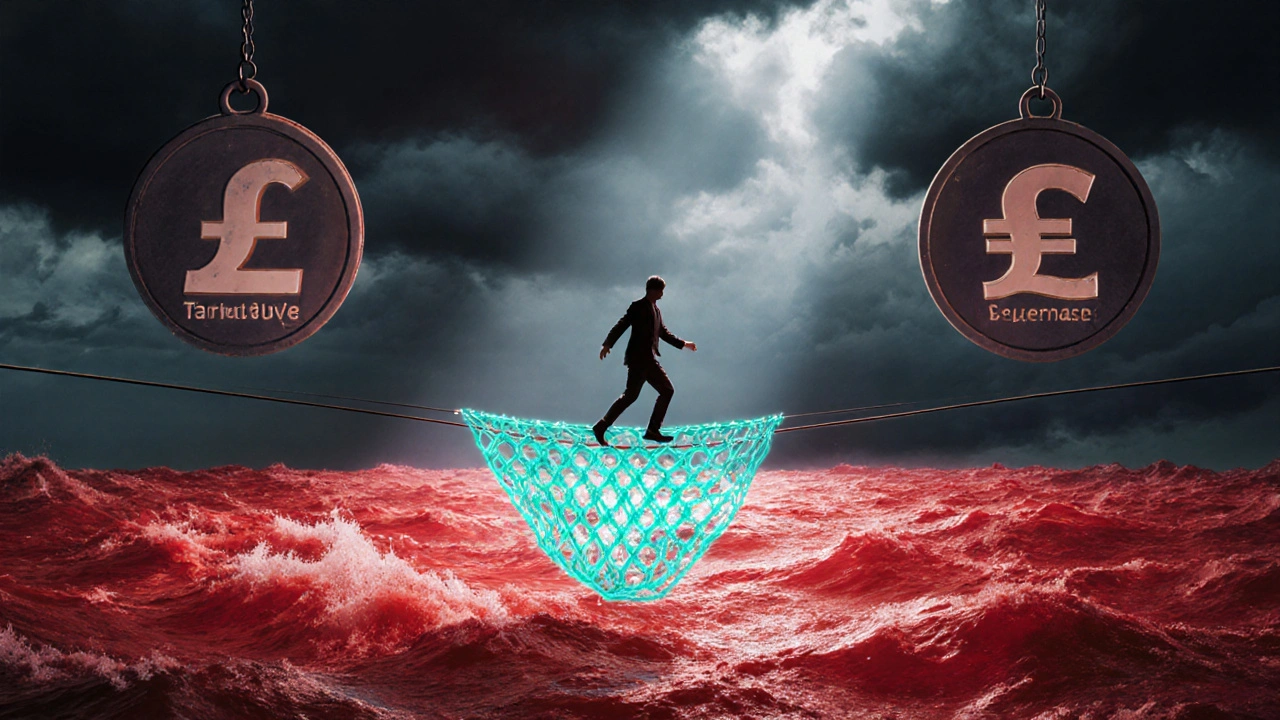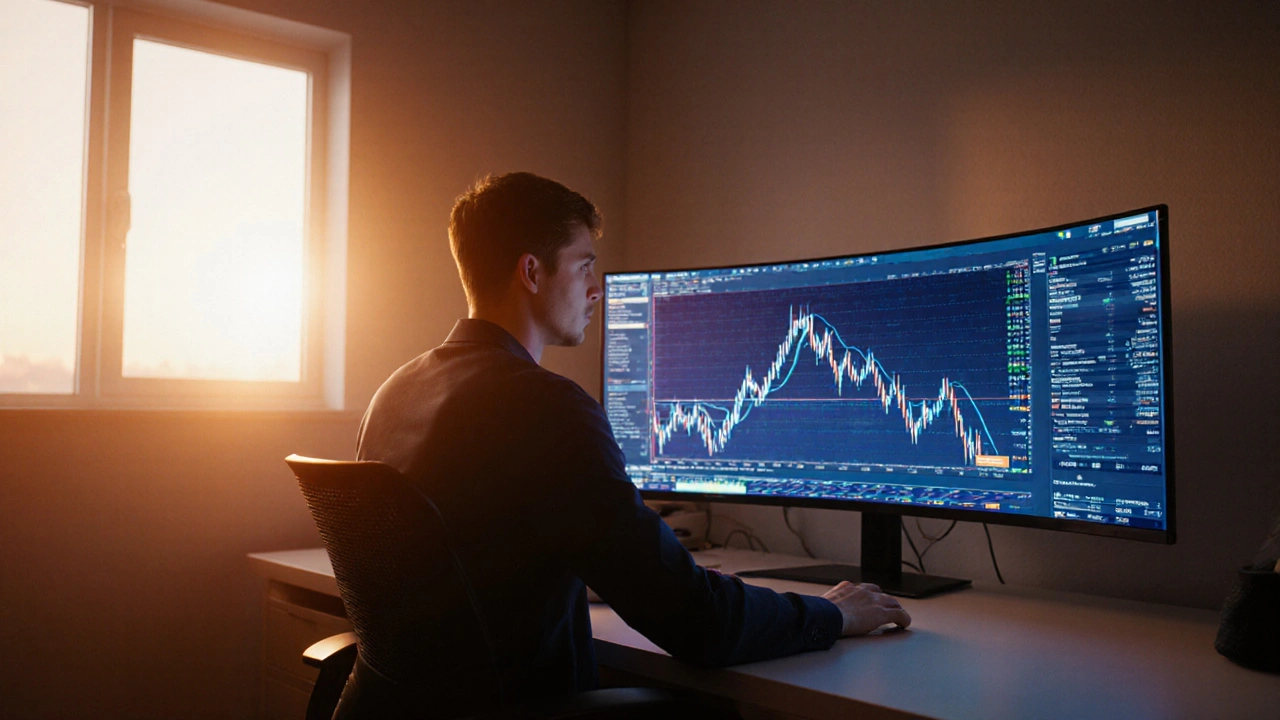When you hear the term perpetual swap is a derivative that lets traders hold positions indefinitely without an expiry date, you probably wonder how it fits into the broader crypto market. In plain English, a perpetual swap is a futures‑like contract that never settles, meaning you can stay long or short as long as you can cover the required margin. It’s become the go‑to product on most major crypto exchange because it offers high leverage and a built‑in mechanism called the funding rate to keep the contract price anchored to the underlying spot price.
Key Takeaways
- Perpetual swaps let you trade crypto with leverage and no expiry date.
- The funding rate is paid between traders, not the exchange, and it nudges the contract price toward the spot price.
- Margin, liquidation, and risk management are critical - a small price move can wipe you out.
- Compared to traditional futures contracts, perpetual swaps are more flexible but require constant monitoring.
- Start with a demo account, calculate your risk, and use stop‑loss orders to protect yourself.
What Is a Perpetual Swap?
A perpetual swap is a type of derivative that mirrors the price of a cryptocurrency-usually Bitcoin (BTC) or Ethereum (ETH)-but never expires. Unlike a standard futures contract, which settles on a predetermined date, a perpetual swap can be held forever as long as you meet the margin requirements.
How Does It Work?
The core idea is simple: you trade a contract that reflects the spot price of the underlying asset. To keep the contract price aligned with the spot market, exchanges use a periodic payment called the funding rate. Every 8hours (or another interval depending on the platform), traders who are long pay-or receive-funding from traders who are short. If the perpetual price trades above the spot index, longs pay shorts; if it trades below, shorts pay longs. This peer‑to‑peer payment forces the contract price to converge toward the spot price over time.
Key Components of a Perpetual Swap
- Leverage: Most exchanges let you amplify your exposure 5×, 10×, 20×, or even 100×. Leverage multiplies both profit and loss.
- Margin: The amount of capital you must lock up to open a leveraged position. It’s expressed as a percentage of the total notional value.
- Funding rate: The periodic payment that balances the contract price with the underlying spot index.
- Index price: A weighted average of spot prices from several major exchanges, used as the reference for funding calculations.
- Liquidation: If your margin falls below the maintenance level, the exchange automatically closes your position to protect the system.

Why Traders Like Perpetual Swaps
They combine the flexibility of spot trading with the power of leverage. You can go short easily, which is handy when the market is bearish. The lack of expiry means you don’t have to roll over contracts, saving you from extra fees and slippage. Plus, funding rates can be a source of income if you understand the market’s bias.
Risks You Can’t Ignore
High leverage is a double‑edged sword. A 5% move against a 20× position erases your margin instantly. Funding payments can flip from positive to negative quickly, turning a profitable position into a loss overnight. Liquidations not only wipe out your position but can also trigger sudden price spikes on the exchange.
Step‑by‑Step: How to Trade a Perpetual Swap
- Choose a reputable crypto exchange that offers perpetual swaps (e.g., Binance, Bybit, or Kraken).
- Complete KYC and enable two‑factor authentication for security.
- Deposit the base currency you want to use as margin (USDT, USDC, or BTC).
- Navigate to the perpetual swap market, select the asset (BTC/USDT, ETH/USDT, etc.), and decide on your leverage.
- Start low (2×‑5×) until you’re comfortable with the mechanics.
- Enter your position size. The platform will show the required margin and the estimated liquidation price.
- Always compare the liquidation price with recent volatility.
- Set a stop‑loss order a few percent above (for shorts) or below (for longs) the liquidation price to protect yourself.
- If the market moves against you, the stop‑loss triggers before liquidation.
- Monitor the funding rate. Positive rates mean longs pay shorts; negative rates mean the opposite.
- Some traders hold positions only during favorable funding windows to capture extra yield.
- Close the position manually when your profit target is reached, or let the funding payment work in your favor.

Perpetual Swap vs. Traditional Futures vs. Spot
| Feature | Perpetual Swap | Traditional Futures | Spot Market |
|---|---|---|---|
| Expiry | No expiry (continuous) | Fixed expiry dates | Immediate settlement |
| Leverage | 5×‑100× typical | Up to 20× on many platforms | None (1× only) |
| Funding Mechanism | Periodic funding payments | Daily settlement prices | Not applicable |
| Position Direction | Long & short equally easy | Long easy, short requires margin | Only long (buy) |
| Liquidity | High on major exchanges | Often lower, depends on contract | Very high |
Best Practices for Managing Risk
- Never risk more than 1‑2% of your account balance on a single trade. Calculate position size accordingly.
- Use stop‑loss orders well above the liquidation price to avoid forced closures.
- Watch the funding rate history; extreme rates often precede price corrections.
- Keep a portion of your capital in a stablecoin to replenish margin quickly.
- Consider diversifying across several assets (BTC, ETH, SOL) to spread risk.
Frequently Asked Questions
How is the funding rate calculated?
Funding = (Interest Component + Premium Component) × Time Interval. The interest part reflects the cost of borrowing the base currency, while the premium part captures the price difference between the perpetual price and the index price. Exchanges publish the exact formula on their docs page.
Can I trade perpetual swaps on a mobile app?
Yes. All major exchanges provide iOS and Android apps that support perpetual swaps, including real‑time funding rate updates and margin alerts.
What happens if the funding rate is zero?
A zero funding rate means longs and shorts are paying nothing to each other. The contract price should then be very close to the index price, but market dynamics can still cause small deviations.
Is a perpetual swap the same as a perpetual futures contract?
They are conceptually identical-both have no expiry and rely on funding. The term “perpetual futures” is often used by traditional‑finance‑oriented platforms, while “perpetual swap” is common in crypto‑centric exchanges.
Do I need to pay fees on top of the funding rate?
Yes. Exchanges charge a trading fee (maker/taker) on each order, plus a small withdrawal fee when you move funds out of the platform. Funding is separate and only exchanged between traders.
Understanding perpetual swaps unlocks a powerful way to speculate on crypto price moves with flexibility and leverage. Treat them like any high‑risk tool: study the mechanics, respect the funding rate, keep your margin healthy, and never trade more than you can afford to lose.

